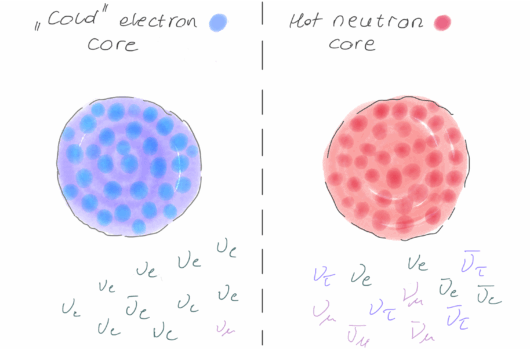Geometric and thermodynamic characterization of binary neutron star accretion discs
Geometric and thermodynamic characterization of binary neutron star accretion discs
View
Abstract
Accretion disks formed in binary neutron star mergers play a central role in many astrophysical processes of interest, including the launching of relativistic jets or the ejection of neutron-rich matter hosting heavy element nucleosynthesis. In this work we analyze in detail the properties of accretion disks from 44 ab initio binary neutron star merger simulations for a large set of nuclear equations of state, binary mass ratios and remnant fates, with the aim of furnishing reliable initial conditions for disk simulations and a comprehensive characterization of their properties. We find that the disks have a significant thermal support, with an aspect ratio decreasing with the mass ratio of the binary from ![]() to 0.3. Even if the disk sample spans a broad range in mass and angular momentum, their ratio is independent from the equation of state and from the mass ratio. This can be traced back to the rotational profile of the disc, characterized by a constant specific angular momentum (as opposed to a Keplerian one) of
to 0.3. Even if the disk sample spans a broad range in mass and angular momentum, their ratio is independent from the equation of state and from the mass ratio. This can be traced back to the rotational profile of the disc, characterized by a constant specific angular momentum (as opposed to a Keplerian one) of ![]() . The profiles of the entropy per baryon and of the electron fraction depend on the mass ratio of the binary. For more symmetric binaries, they follow a sigmoidal distribution as a function of the rest mass density, for which we provide a detailed description and a fit. The disk properties discussed in this work can be used as a robust set of initial conditions for future long-term simulations of accretion disks from binary neutron star mergers, posing the basis for a progress in the quantitative study of the outflow properties.
. The profiles of the entropy per baryon and of the electron fraction depend on the mass ratio of the binary. For more symmetric binaries, they follow a sigmoidal distribution as a function of the rest mass density, for which we provide a detailed description and a fit. The disk properties discussed in this work can be used as a robust set of initial conditions for future long-term simulations of accretion disks from binary neutron star mergers, posing the basis for a progress in the quantitative study of the outflow properties.




